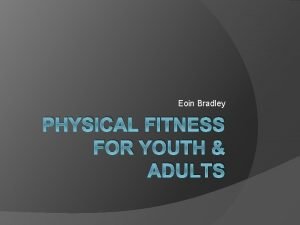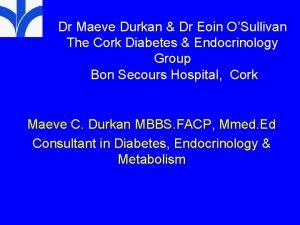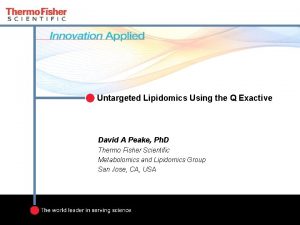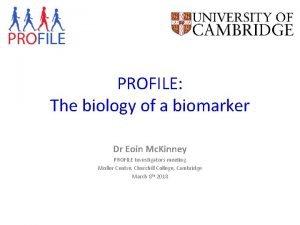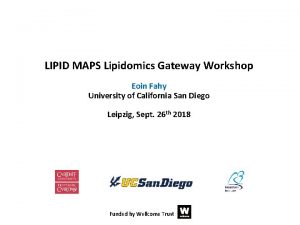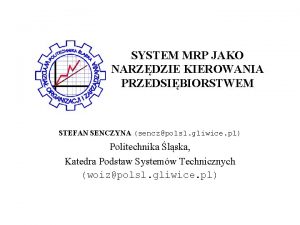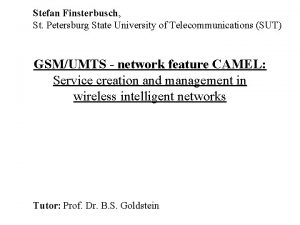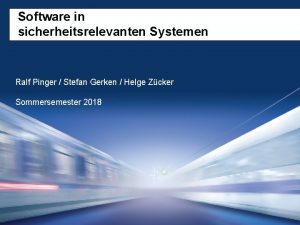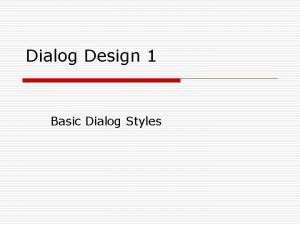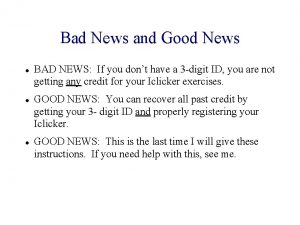DIALOG and DIALOG News Eoin Golden and Stefan























- Slides: 23

DIALOG and DIALOG+ News Eoin Golden and Stefan Priebe

DIALOG • “How satisfied are you with your…” mental health job situation leisure activities friendships medication meetings physical health accommodation partner/family personal safety practical help received • Rating of each domain from 1 -7 • “Do you need additional help? ”

First trial • 507 patients with schizophrenia/related disorder from 6 European countries • On average used 4 times over 12 months • After 12 months: -improved quality of life -improved treatment satisfaction -fewer unmet needs • Small effect size, higher in East London

DIALOG scale • 8 Quality of life items – high internal consistency correlation with full MANSA score 0. 94 covering the same factorial structure • 3 treatment satisfaction items good internal consistency • Each item meaningful • Efficient outcome measure

The EPOS project • Redesign of software • Extension of intervention: DIALOG+ • Randomised controlled trial to test the effectiveness of the DIALOG+ intervention

Previous software

Current software • • Tablet device (i. Pad) Touch screen Intuitive interface Easily shared between patient and clinician




4 -step approach • Based on solution focused therapy 1. Understanding: why? what is working? 2. Looking forward: best-case scenario? smallest improvement? 3. Considering options: what can the patient do? what can the clinician do? what can others do? 4. Agreeing on actions


EPOS trial: design Cluster randomised controlled trial DIALOG+ versus active control 6 -month intervention period Outcomes assessed at baseline, 3 months, 6 months and 12 months • Primary outcome: Quality of Life - MANSA • •

Inclusion criteria: patients • • Age 18 -65 years Treatment in community team for at least 1 M No planned discharge for the next six months Diagnosis ICD-10 F 20 -29 Capacity to give informed consent Mean MANSA score of <5 Sufficient command of English language 179 patients at baseline

Implementation • • 30% of patients never started DIALOG+ 2. 6 sessions (SD=1. 3) in the first 3 months 1. 5 sessions (SD=1. 1) in the second 3 months 4. 1 sessions (SD=1. 9) in total

Results • Better quality of life after 3, 6 and 12 months • Lower levels of general symptoms after 3, 6 and 12 months • Fewer unmet needs after 3 and 6 months • Better objective social situation after 12 months • Lower overall treatment costs over 12 months

Other outcomes No effect on other outcomes: • Treatment satisfaction (CSQ-8) • Self-Efficacy (GSS) • Well-being ( WEMWBS) • Positive symptoms (PANSS-positive) • Negative symptoms (PANSS-negative) • Therapeutic relationship (STAR-Patient and STAR-Clinician)

Summary of findings • Effect sizes to match costly, intensive interventions (3 m SQOL: d = 0. 34) • Effect remains even after stopping • Findings do not reflect a general appraisal across scores • Cost savings

Implications • DIALOG+ turns routine meetings into therapeutically effective interventions – identifying needs, discussing, and initiating change • Low cost, effective intervention • Generic intervention • Easily implemented - no disruption to services • Provides meaningful routine outcome data

Downloading DIALOG app • i. Pad users only (future plans to develop for Android users – watch this space) • Visit the following link on your i. Pad: https: //itunes. apple. com/us/app/dialog/id 9142 52327? ls=1&mt=8 • Or search for ‘DIALOG’ (in caps) on the App Store and look out for this icon in the results:

Customising DIALOG app • Enter ‘settings’ on your i. Pad home screen • Enter the DIALOG settings from the list of your apps on the left • Set ‘Additional Help’ and ‘DIALOG+’ to off for basic DIALOG scale • Activate ‘Additional Help’ for extra help question • Activate ‘DIALOG+’ for full solution focused intervention

Customising DIALOG app Set these buttons to ‘on’ or ‘off’ as desired

Contact details s. priebe@qmul. ac. uk e. m. golden@qmul. ac. uk
 Eoin bradley
Eoin bradley Eoin caulfield william fry
Eoin caulfield william fry Maeve durkan
Maeve durkan Eoin fahy
Eoin fahy Holly biasci
Holly biasci Lipidomics
Lipidomics Eoin fahy
Eoin fahy Eoin fahy
Eoin fahy Ragam dialog (dialog style)
Ragam dialog (dialog style) Dialog berbasis pengisian formulir biasa disebut
Dialog berbasis pengisian formulir biasa disebut Modified fibonacci sequence
Modified fibonacci sequence Golden ratio last supper
Golden ratio last supper What is hard news
What is hard news A television news director wishes to use three news stories
A television news director wishes to use three news stories Both of the statues on the shelf is broken
Both of the statues on the shelf is broken Stefan brands
Stefan brands Imn lui stefan cel mare
Imn lui stefan cel mare Stefan senczyna
Stefan senczyna Stefan blomberg mobbning på jobbet
Stefan blomberg mobbning på jobbet Kardynał stefan wyszyński krótki życiorys
Kardynał stefan wyszyński krótki życiorys Stefan lunkenheimer
Stefan lunkenheimer Stefan finsterbusch
Stefan finsterbusch Stefan gerken
Stefan gerken Stefan meyer institute
Stefan meyer institute
